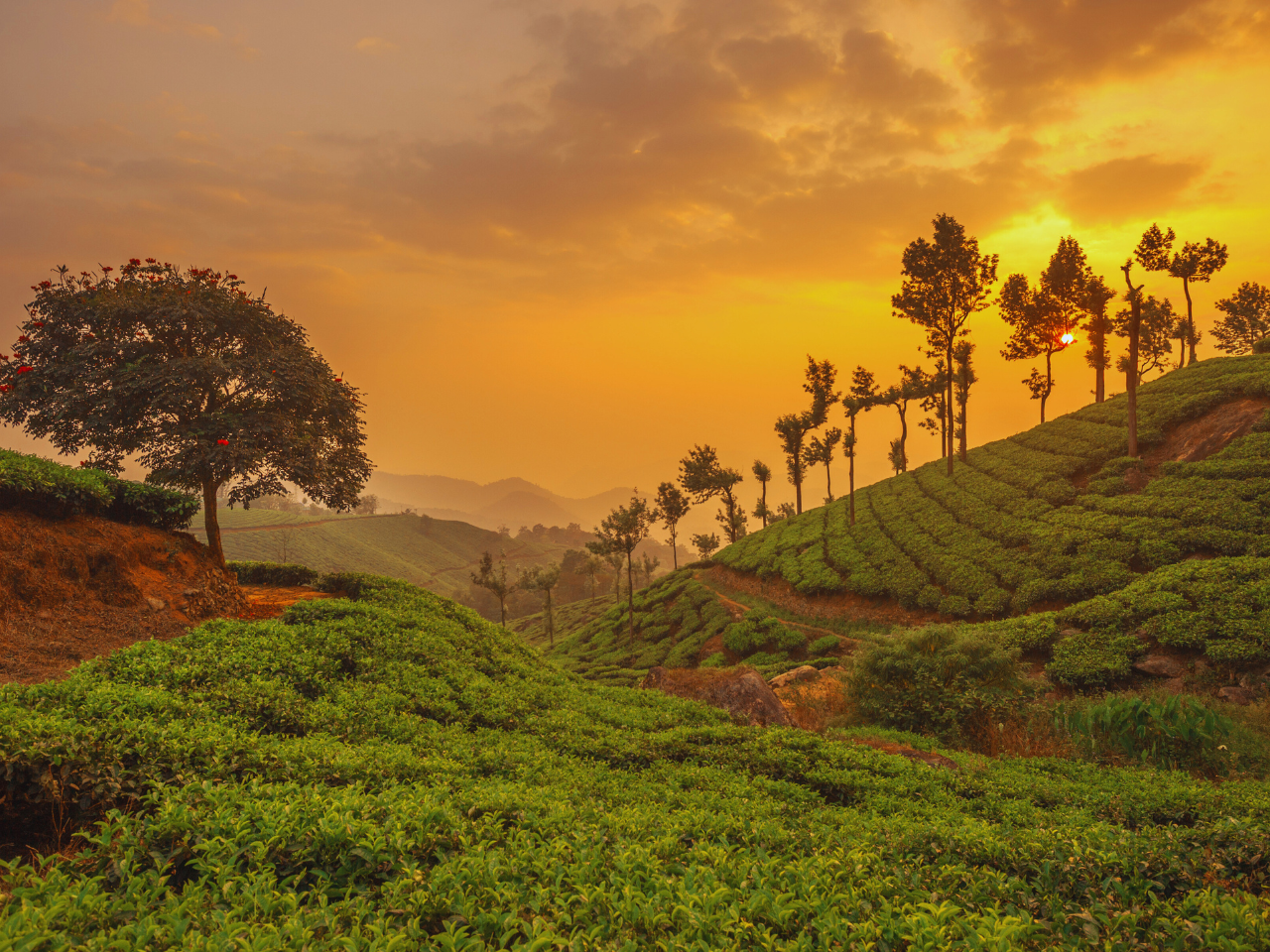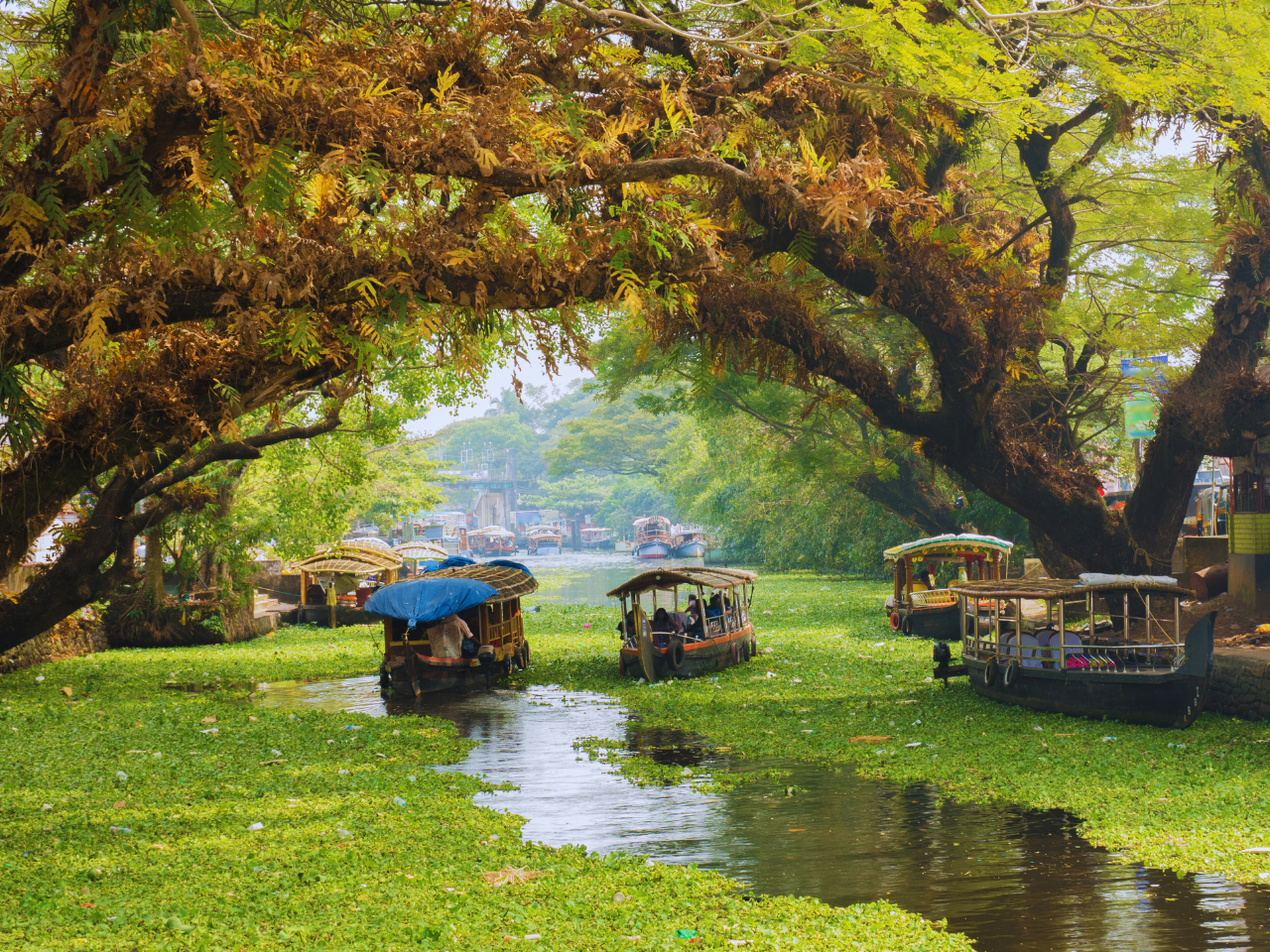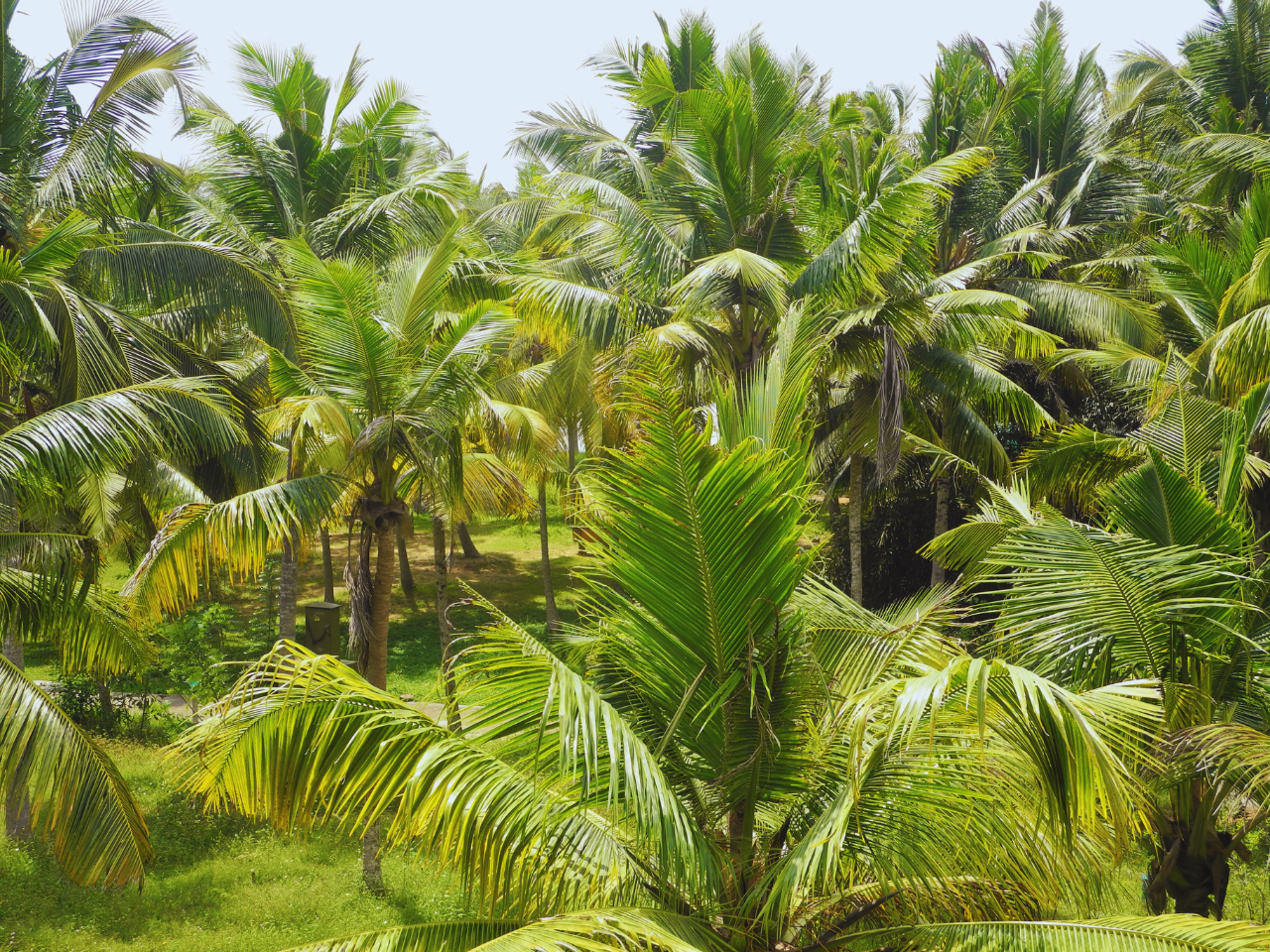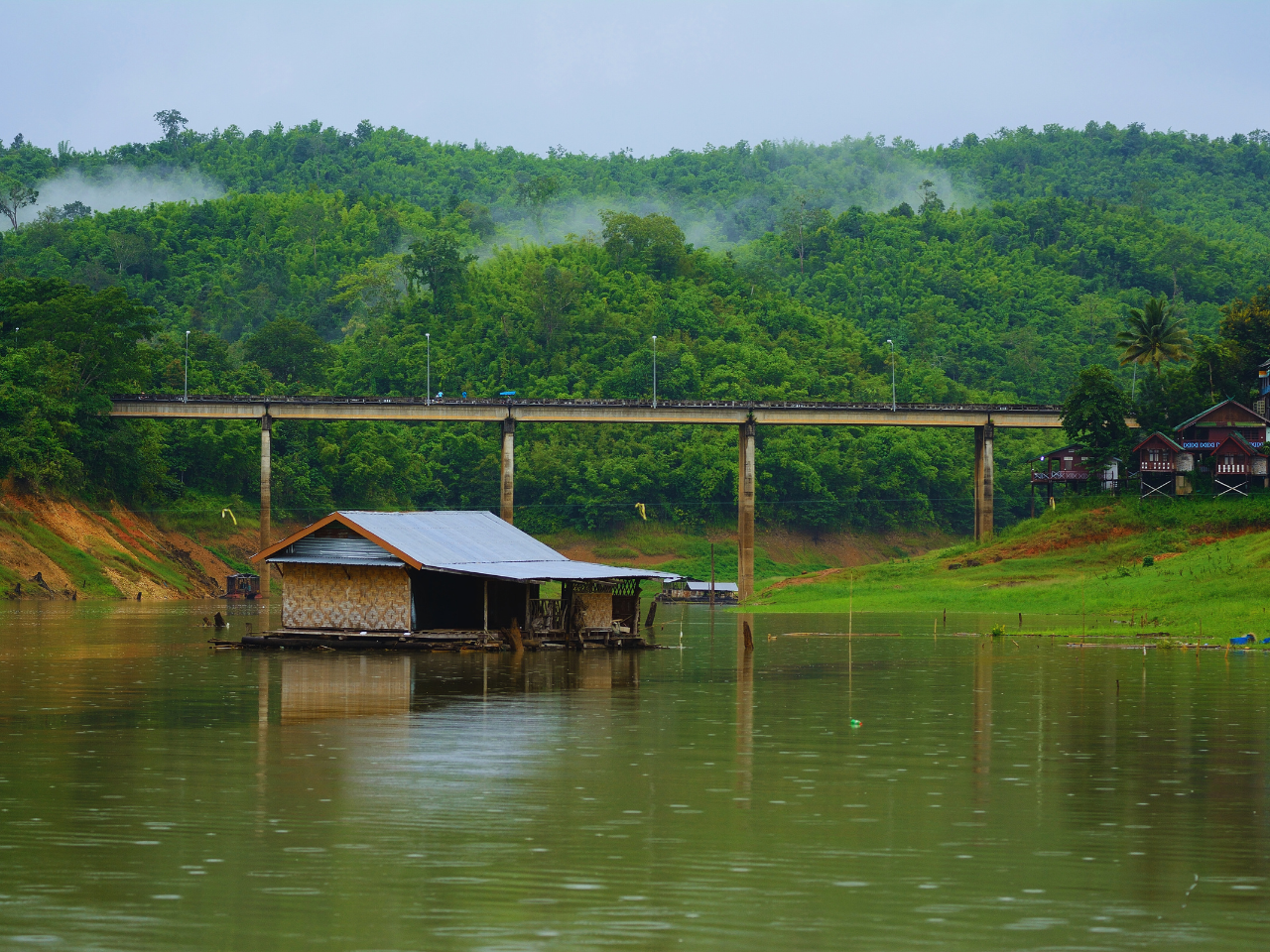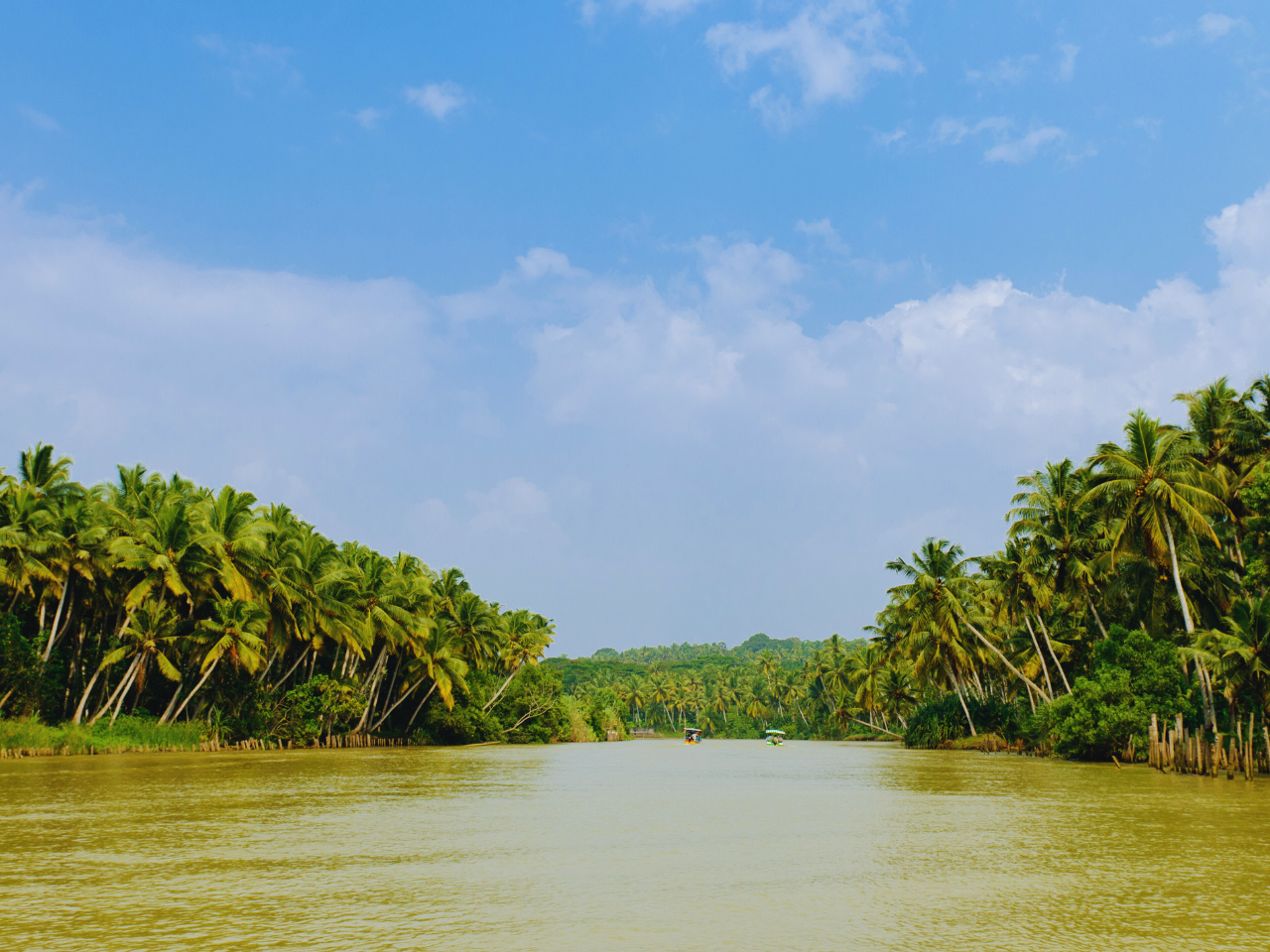Munnar
Munnar – The Serene Hill Station of Kerala
Munnar, a picturesque hill station in the Western Ghats of Kerala, is renowned for its stunning landscapes, lush tea plantations, and cool climate. At an altitude of approximately 1,600 meters (5,200 feet), Munnar is often referred to as the “Kashmir of South India.” It is a popular destination for honeymooners, nature lovers, and adventure enthusiasts alike.
Munnar’s rolling hills are blanketed with emerald-green tea gardens, interspersed with dense forests and sparkling waterfalls. The town’s colonial past is reflected in its charming bungalows, churches, and other heritage structures.
Beyond its natural beauty, Munnar offers a tranquil escape from the bustling cities, with plenty of opportunities to explore the great outdoors, whether through trekking, wildlife spotting, or simply relaxing amidst the serene surroundings.
Best Time to Visit Munnar
Summer (March to May):
- Ideal for sightseeing: The summer months in Munnar are pleasant, with temperatures ranging from 15°C to 25°C. It’s the perfect time to explore tea gardens, waterfalls, and enjoy outdoor activities.
- Weather: Daytime temperatures are comfortable, and the evenings are cool, making it ideal for leisurely strolls and picnics.
Monsoon (June to September):
- Witness Munnar’s lush greenery: The monsoon transforms Munnar into a verdant paradise. The rains enhance the beauty of the waterfalls and the tea gardens, but outdoor activities may be limited due to heavy showers.
- Weather: Temperatures range from 15°C to 20°C, with frequent rain showers. It’s a great time for those who enjoy the monsoon ambiance and don’t mind getting a bit wet.
Winter (October to February):
- Perfect for honeymooners and nature lovers: Winter in Munnar is cool and misty, with temperatures ranging from 10°C to 20°C. It’s an ideal time for trekking, wildlife safaris, and exploring the region’s natural beauty.
- Weather: The chilly mornings and evenings add a romantic charm to the place, making it a popular destination for couples.
Culture and Cuisine of Munnar
Culture:
Munnar’s culture is a reflection of its diverse communities, including the indigenous tribal people, Tamil workers from the tea estates, and Keralite residents. The town has a unique blend of traditions, with influences from Tamil, Malayali, and British colonial heritage.
Festivals:
Munnar hosts various festivals throughout the year, with the most notable being the Neelakurinji Blooming Festival, which occurs once every 12 years when the hills are carpeted with the rare Neelakurinji flowers. Other important festivals include Onam, Pongal, and the Munnar Flower Show.
Cuisine:
Munnar offers a variety of culinary delights, including traditional Kerala dishes and Tamil cuisine. Must-try dishes include Appam with Stew, Kerala Sadya, Puttu and Kadala Curry, and freshly prepared fish fry. Don’t miss the local tea, which is a staple in every household and reflects the region’s tea culture.
Top Destinations to Explore in Munnar
Eravikulam National Park:
Home to the endangered Nilgiri Tahr, this national park is a must-visit for wildlife enthusiasts. The park offers trekking trails and panoramic views of the surrounding hills and valleys.
Mattupetty Dam:
A popular tourist spot, Mattupetty Dam offers boating facilities on the reservoir, where you can enjoy the scenic beauty of the surrounding hills. It’s also a great spot for birdwatching.
Anamudi Peak:
Standing at 2,695 meters (8,842 feet), Anamudi is the highest peak in South India. It’s a popular trekking destination, offering breathtaking views of the Western Ghats.
Tea Museum:
Operated by the Tata Tea Group, this museum offers a fascinating insight into the history and process of tea production in Munnar. Visitors can explore old machinery, photographs, and even participate in tea-tasting sessions.
Top Station:
Located at the highest point on the Munnar-Kodaikanal road, Top Station offers stunning views of the Western Ghats and the valleys below. It’s particularly famous for the Neelakurinji flowers that bloom once every 12 years.
Kundala Lake:
A serene and picturesque lake, Kundala is known for its boating facilities and the beautiful cherry blossoms that bloom here twice a year. The nearby Kundala Dam is also a popular spot for photography.
Attukal Waterfalls:
A scenic spot located between Munnar and Pallivasal, Attukal Waterfalls is a popular trekking destination. The surrounding greenery and the cascading waterfalls make it a perfect place for nature lovers.
Marayoor:
Known for its ancient dolmens and sandalwood forests, Marayoor is a fascinating destination for history buffs and nature enthusiasts. The area is also famous for its jaggery production.
Chinnar Wildlife Sanctuary:
Situated on the Tamil Nadu border, Chinnar is home to a variety of wildlife, including elephants, leopards, and the endangered Grizzled Giant Squirrel. The sanctuary offers guided treks and jeep safaris.
Adventure Activities in Munnar
Trekking:
Munnar is a trekker’s paradise, with trails ranging from easy to challenging. The Meesapulimala Trek, Chokramudi Trek, and Anamudi Trek are popular routes that offer spectacular views of the Western Ghats.
Rock Climbing and Rappelling:
The rocky terrain around Munnar provides excellent opportunities for rock climbing and rappelling. Local adventure companies offer guided climbs for beginners and experienced climbers alike.
Paragliding:
Experience the thrill of flying over Munnar’s lush valleys with paragliding. Tandem flights are available for those who want to experience the adrenaline rush without the need for prior experience.
Camping:
Camping in the serene environment of Munnar is a memorable experience. There are several camping sites, including those near Top Station and Meesapulimala, where you can enjoy a night under the stars.
Boating:
Enjoy a peaceful boating experience at Mattupetty Lake and Kundala Lake. Pedal boats, rowboats, and speedboats are available for hire.
Cycling:
Explore the scenic tea gardens and winding roads of Munnar on a bicycle. Several cycling routes take you through picturesque landscapes, offering a unique way to experience the region.
Elephant Safari:
Take an elephant safari at the Carmelagiri Elephant Park, where you can ride through the spice plantations and tea gardens on the back of a gentle giant.
Hidden Places and Offbeat Experiences in Munnar
Kolukkumalai:
Visit the world’s highest tea plantation at Kolukkumalai, located about 35 kilometers from Munnar. The drive to Kolukkumalai is an adventure in itself, and the panoramic views from the plantation are breathtaking.
Vattavada:
A quiet and less explored village near Munnar, Vattavada is known for its vegetable farms and scenic beauty. It’s a great place for trekking, birdwatching, and experiencing rural life.
Chinnakanal:
Located 20 kilometers from Munnar, Chinnakanal is famous for its waterfalls and stunning views of the Western Ghats. It’s a perfect spot for a peaceful retreat.
Anayirangal:
Surrounded by tea plantations and forests, Anayirangal is a beautiful dam site located about 22 kilometers from Munnar. The reservoir is ideal for boating, and the surrounding area offers great opportunities for trekking.
Lockhart Gap:
A viewpoint offering spectacular views of the mist-covered valleys and distant mountains, Lockhart Gap is a hidden gem located 13 kilometers from Munnar. It’s a great place for a quiet picnic or a photography session.
Nature and Wildlife in Munnar
Pampadum Shola National Park:
The smallest national park in Kerala, Pampadum Shola is rich in biodiversity and offers a peaceful retreat for nature lovers. The park is home to many rare and endemic species of flora and fauna.
Thattekad Bird Sanctuary:
Located about 60 kilometers from Munnar, Thattekad is one of the richest bird habitats in India. Birdwatchers can spot a wide variety of species, including the Malabar Grey Hornbill and the Indian Pitta.
Echo Point:
A popular tourist spot, Echo Point is known for its natural echo phenomenon. The area is surrounded by lush green hills and is a great place for nature walks and boating.
Lakkam Waterfalls:
Nestled in the dense forests of Munnar, Lakkam Waterfalls is a serene spot ideal for picnics and nature walks. The waterfalls are especially beautiful during the monsoon season.
Tips for Visiting Munnar
- Book in Advance: Munnar is a popular tourist destination, so it’s advisable to book your accommodation and travel arrangements well in advance, especially during peak seasons (October to February).
- Pack Accordingly: If you’re visiting during winter, pack warm clothing as temperatures can drop significantly in the evenings and early mornings. A light jacket is recommended even during summer months.
- Explore Beyond the Town: While Munnar town itself has several attractions, the real beauty of the region lies in its surrounding areas. Don’t hesitate to venture out to explore the tea estates, waterfalls, and viewpoints.
- Opt for Guided Tours: To make the most of your visit, consider hiring a local guide or opting for guided tours. They can provide valuable insights into the history, culture, and natural beauty of Munnar.
- Respect the Environment: Munnar is known for its pristine environment, so make sure to dispose of waste properly, avoid using plastic, and respect the local flora and fauna.
- Try Local Delicacies: Don’t miss the opportunity to try local Kerala cuisine at some of the smaller, traditional restaurants in Munnar. The authentic flavors are a treat for the taste buds.
- Carry Cash: While Munnar has ATMs and some places accept cards, it’s advisable to carry cash, especially if you plan to visit remote areas or small shops.
- Stay Hydrated: The cool climate might not make you feel thirsty, but it’s important to stay hydrated, especially if you’re involved in outdoor activities like trekking or cycling.
- Be Prepared for Rain: Munnar can experience sudden showers even outside the monsoon season, so carrying a raincoat or umbrella is a good idea.
- Photography Opportunities: Munnar offers countless photography opportunities, from mist-covered valleys to vibrant tea gardens. Make sure to carry your camera and capture the breathtaking landscapes.
Conclusion
Munnar is a destination that captivates every visitor with its serene landscapes, lush greenery, and cool climate. Whether you’re looking for adventure, relaxation, or a romantic getaway, Munnar has something to offer. With its charming tea gardens, misty mountains, and diverse wildlife, Munnar provides a perfect escape into nature. Coupled with top-rated accommodations, rich culture, and delicious cuisine, Munnar promises an unforgettable experience in the heart of Kerala.
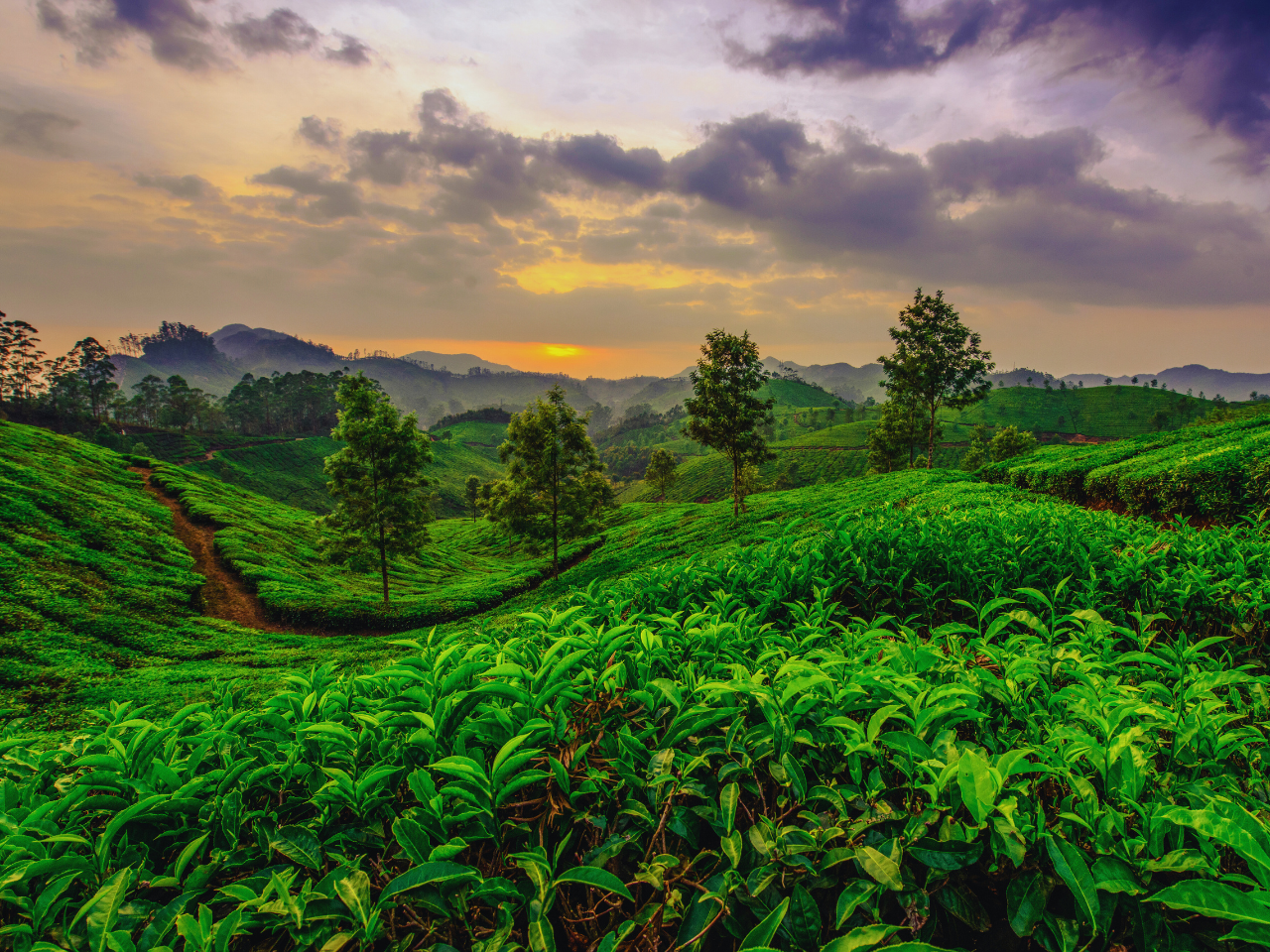
Get Your Best Tour Experience
Customer Speak
Best Seller Package Kerala
Explore More About Kerala
To reach Kerala, you have several options depending on where you’re starting from. Here’s an overview:
1. By Air
- Kerala has four main international airports: Cochin International Airport (COK) in Kochi, Trivandrum International Airport (TRV) in Thiruvananthapuram, Calicut International Airport (CCJ) in Kozhikode, and Kannur International Airport (CNN).
- Direct flights are available from major cities in India and international destinations like the Middle East, Southeast Asia, and parts of Europe.
- From the airport, you can take a taxi or bus to your final destination within Kerala.
2. By Train
- Kerala has a well-connected railway network with major train stations in Trivandrum (Thiruvananthapuram), Ernakulam (Kochi), Kozhikode (Calicut), and Kannur.
- Book tickets through IRCTC or at local railway stations. Major trains from cities like Delhi, Mumbai, Bangalore, Chennai, and Hyderabad connect to Kerala.
3. By Road
- Kerala is well connected by road with neighboring states: Karnataka and Tamil Nadu.
- You can take a long-distance bus run by KSRTC (Kerala State Road Transport Corporation) or private operators, which are frequent from Bangalore, Chennai, and other South Indian cities.
- Alternatively, you can self-drive or hire a cab for a road trip into Kerala.
4. By Sea
- Kochi has a major port, and some luxury cruises and boats stop here on certain international and domestic routes.
- You can explore options for cruises from destinations like Mumbai.
5. Local Transport within Kerala
- Once in Kerala, travel between cities is convenient via trains, state-run buses, and private taxis.
- For shorter distances, you can also consider auto-rickshaws and ride-hailing services.
If you need specific guidance based on your starting location, let me know!
The best time to visit Kerala largely depends on what you want to experience, but generally, the ideal time is from October to March. Here’s a breakdown:
October to March: This is the peak tourist season. The weather is pleasant, with cooler temperatures and low humidity, making it perfect for sightseeing, backwater tours, and beach activities.
April to June: These months are hotter and more humid, which can make outdoor activities less enjoyable. However, this is a good time to find deals on accommodations and visit less crowded places.
July to September: This is the monsoon season, with heavy rainfall. While it’s not the most popular time to visit, the lush greenery and fewer tourists can be appealing. It’s also a great time for Ayurvedic treatments, as the weather is believed to enhance the effectiveness of these therapies.
If you’re interested in specific activities like wildlife watching, festivals, or cultural experiences, those can also influence the best time for your visit.
Popular destinations in Himachal Pradesh include Shimla, Manali, Dharamshala, Kullu, Spiti Valley, Kasol, McLeod Ganj, Kasauli, and Dalhousie.
The best way to reach Himachal Pradesh is by air to Shimla or Dharamshala, or via road or train routes.
Yes, Himachal Pradesh offers excellent trekking opportunities with diverse trails, beautiful landscapes, and varying difficulty levels for adventurers.
Yes, Himachal Pradesh has direct flights to Kangra Airport and Bhuntar Airport, connecting to major Indian cities like Delhi.
Yes, Himachal Pradesh offers affordable accommodations, local cuisine, and budget-friendly activities, making it a great destination for budget travelers.
God’s Own Country: Kerala is often referred to as “God’s Own Country” due to its stunning landscapes, rich culture, and natural beauty, including backwaters, hills, and beaches.
High Literacy Rate: Kerala boasts one of the highest literacy rates in India, at over 96%. This is attributed to the state’s strong focus on education and social welfare.
Unique Festivals: The state is famous for its vibrant festivals, such as Onam and Vishu, which showcase traditional music, dance, and feasting. The snake boat races during Onam are particularly popular.
Ayurveda Hub: Kerala is renowned for its Ayurvedic treatments and wellness tourism. The state has numerous Ayurveda resorts and practitioners, making it a leading destination for holistic healing.
Backwaters: The backwaters of Kerala, particularly in places like Alleppey and Kumarakom, are a network of lagoons, lakes, and canals that offer houseboat experiences and are a major tourist attraction.
Diverse Wildlife: Kerala is home to several wildlife sanctuaries and national parks, including Periyar National Park and Wayanad Wildlife Sanctuary, where visitors can see elephants, tigers, and various bird species.
Cultural Melting Pot: The state has a rich cultural heritage influenced by various religions, including Hinduism, Islam, and Christianity, reflected in its architecture, cuisine, and art forms.
Spice Capital: Historically, Kerala was a major spice trading center, earning the nickname “Spice Garden of India.” It produces a variety of spices, including black pepper, cardamom, and cinnamon.
UNESCO World Heritage Sites: The Hill Stations of Kerala, including the Western Ghats, have been designated as UNESCO World Heritage Sites for their biodiversity and unique ecosystems.
Women Empowerment: Kerala is known for its progressive gender equality and women’s empowerment initiatives, which are reflected in higher participation of women in education and the workforce compared to many other Indian states.

